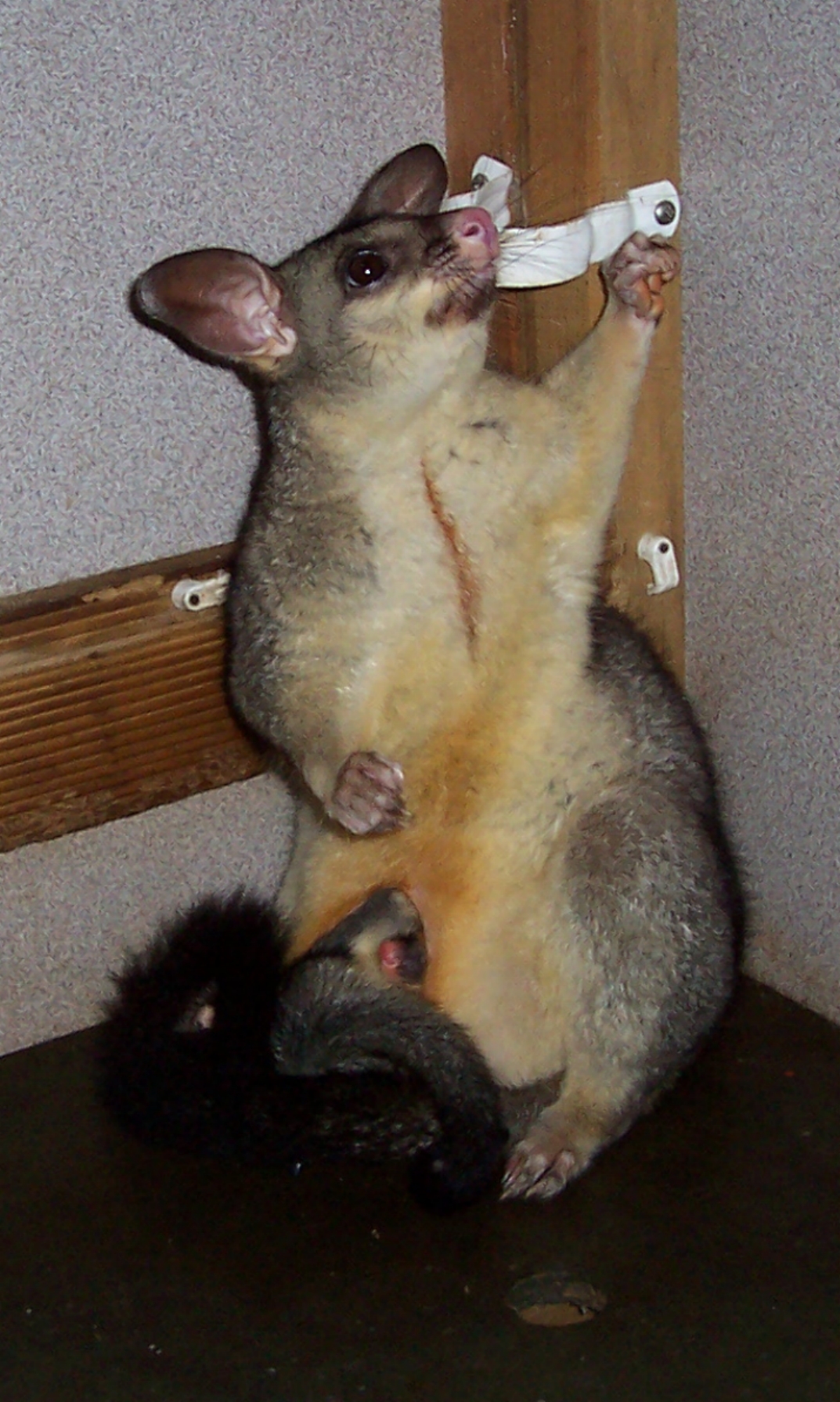I desperately needed new potholders, so I unpacked my crochet hooks, crawled into my stash (yes, it's not a heap of wool, it's a mountain) and made a quick potholder for myself. Nothing fancy, size mattered (I love the larger ones, like 20 cm/8 in) and I needed it now; so here it is:
And while crocheting I even found time to read
Tichiro's excellent knitting blog (she actually distastes crochet, she is a hard core knitter). Tichiro attended a fibre crafts' trade fair in Cologne recently and reported about it on her blog. Apart from 'monster yarns' (finger or even hot-dog thick yarns), beautiful
Koigu merino wool, she also had a picture of
Lanamania's super soft possum wool. ... Wait, possum wool?
Although the thought of soft possum fur bade to snuggle the possum wool against your cheeks I wanted to know a bit more about it since I had some woolly thoughts in my head (especially the thought that possums can't be sheared).
In 1837 possums were introduced into New Zealand from Australia. Not by accident, mind you, but by the fur trade. The problem with this unruly animals was, that they just withered away when kept in cages (in contrast to minks which therefore have to suffer an extended time span before they get killed and transformed into fashion products). So it was probably best (for the fur industry) to set them free and kill them like you do with seal, again to get some fashionable products. Problem was, that possums were protected (and I believe still are in Australia). But money is resourceful and with enough stamina you can lobby your way into many a things. In 1936 possums were declared a 'pest' by law and have been hunted down since then.
On the
Knitter's addiction web page, they accidentally also sell possum wool, they say that there are more possums then people in New Zealand (9 millions vs. 3. 5 million), but then so are sheep which amount to 33 million (but what do I know...).
Anyway, I want to cite something from their web page, like possum facts and why they are evil and mean and worth to be clubbed to death and transformed into wool:
"The possum is actually quite aggressive and will fight if disturbed". Well, you can't change anything here, because humans fight even if not disturbed (does this make the possum more civilised than a human?)
But then again, what do I know. All I can do is show you some possum photos and you can decide if you want to buy possum wool or not.
This is a possum with its wool still on:
This is a possum in the wool making:
I suggest to go to the airgunner forum to see more stills of the process.
At the moment the fur industry, sorry, slip again, the Department of Conservation (DOC) is using Sodium monofluoroacetate (also called 1080) to poison the possums. Which is actually a good idea, since you can then just pick up the carcasses and make wool out of them. Simple! In case you want a vivid description of how the poison slowly works, look
here.
The DOC has also a pdf file describing any harmful
implications concerning 1080. The good thing is, it will eventually get into the groundwater (after all New Zealand uses up 80 % of the world production and by aerial applications spreads 2.3 tonnes a year over their beautiful island) and from there into plants and up the food chain. So eventually the possum's biggest predator will one day have killed itself. But until then you can still buy possum wool. If you are neither vegetarian nor animal lover go ahead and enjoy! But then, what do I know....


































